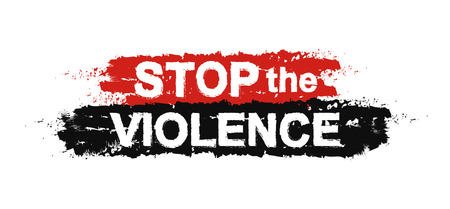 Since the beginning of this century, 36 mass shootings in 22 states have claimed the lives of 388 people. Although this number is less than the number of murders in the City of Chicago alone—500 every year—the randomness of mass shootings makes them more frightening and puzzling.
Since the beginning of this century, 36 mass shootings in 22 states have claimed the lives of 388 people. Although this number is less than the number of murders in the City of Chicago alone—500 every year—the randomness of mass shootings makes them more frightening and puzzling.
The roots of mass murder, like those of a giant tree, lie well beneath the surface. Yet many people foolishly expect to find the cause of mass murder in plain sight. Every time it occurs, they look for the most obvious and easiest explanation, which in the vast majority of cases is a gun. They then think no further, but simply assume that they have identified the root cause and set about finding how best to restrict the gun or, better yet, ban it.
That was the immediate reaction to the shooting in Parkland, FL. Thankfully, however, many people in government have been taking a wiser approach, putting aside convenient assumptions and instead digging deeper, asking probing questions. I am thinking mainly of President Trump and the governors he invited to the White House to identify genuine solutions. Mentioned were raising age limits for gun purchasers, having a small number of school personnel trained to use arms against mass killers, and identifying would-be killers and getting them the treatment they need in a timely manner.
One governor went even deeper, suggesting that the social and cultural factors that shape young minds be given closer attention. President Trump echoed that idea when he expressed concern about the amount of gratuitous violence bombarding young people daily in the various media.
A helpful way to conduct the analysis that the governor and the President were recommending is to work back through time identifying the likely causes of the various effects, in this manner:
Why did Nikolas Cruz purchase the gun and kill the people?
Obviously, he believed they deserved to die. What was their “offense”? Perhaps some of them teased or bullied him; perhaps not. Perhaps he believed their ”offense” was not against him at all, but against something much larger—say, the planet or the cosmos. Whatever it was, of course, and however large or small, it may have been entirely a figment of his imagination.
But why did he believe that their offenses, however grievous, deserved the death penalty? Why not, instead, verbal condemnation on a sign in the school hall or in a nasty letter or tweet?
First, because young people have been taught in school and in popular culture that even the smallest slight can undermine their self-esteem and block their self-actualization. Thus they are conditioned, not only to be easily offended—for example, at hearing someone express a political view they don’t share, or at hearing “God bless you” when someone sneezes—but also to overreact by magnifying small slights or criticisms.
Also, because violent response is glamorized in popular movies, television shows, and above all, video games. Such fare has been a steady diet for a couple of generations of young people. Cruz may or may not have been addicted to such violent fare himself, but he could not have helped being aware of it and seeing the daily real-life accounts of violence in the news.
And why did he believe that, out of all the people on earth, he was the one responsible for carrying out the act?
Because the emphasis over the last half-century has been on thinking well of oneself. First, concepts that were thought to diminish self—self-criticism, self-doubt, self-denial, self-restraint, self-sacrifice—were disparaged, while more “positive” concepts—self-acceptance, self-assurance, self-actualization, self-confidence, self-direction—were encouraged. In time, however, more radical champions of self urged bolder perspectives that often opposed traditional views of self—self-love, self-assertion, self-advancement, self-aggrandizement, self-gratification, self-esteem, self-absorption. From there it was but a short step to full-blown narcissism.
In such a cultural environment, it is not surprising that many people have inflated views of themselves and correspondingly deflated views of others, or that, accordingly, such people are inclined to undervalue the rights of others. Nor should it come as a shock that in extreme cases such people can become so deluded as to believe they have the right to decide who shall live and who shall die.
Kudos to the governor who suggested that the effort to end violence in America focus on social and cultural influences on young people. Kudos, too ,to President Trump for urging a closer look at the glamorization of violence in entertainment. Those focuses, together with renewed appreciation of the traditional view of self, will help restore respect for human life and overcome the scourge of mass murders.
Copyright © 2018 by Vincent Ryan Ruggiero. All rights reserved



